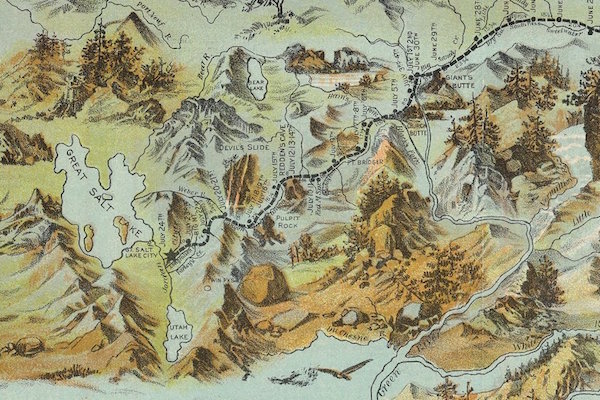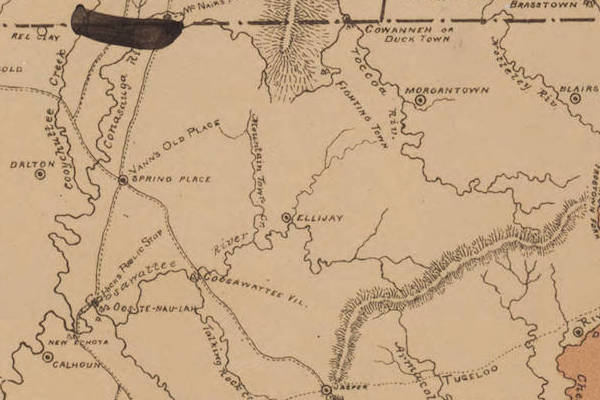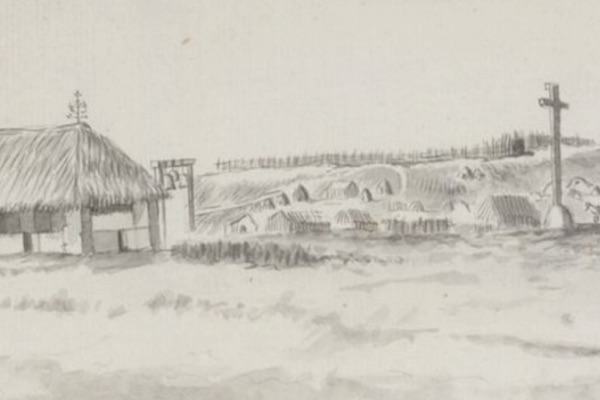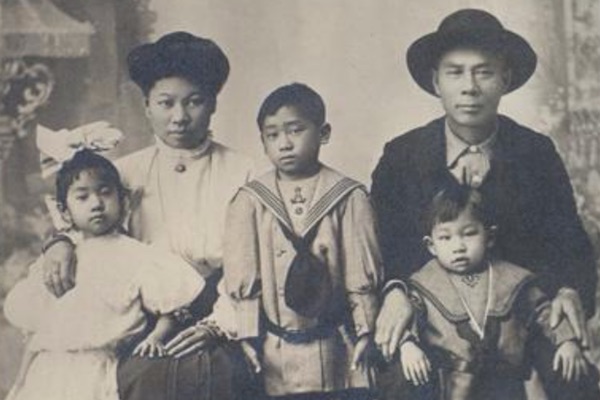Between the sixteenth and nineteenth centuries, the Transatlantic Slave Trade brought twelve million enslaved Africans across the Atlantic Ocean to the New World as part of a broad exchange of trade goods between England, West Africa, South America, the West Indies, and the United States. While the largest numbers of slaves were sent to South America, particularly Brazil, and the West Indies, smaller numbers arrived in the United States where Americans purchased them for labor. Most often from the west and central portions of the African continent, these enslaved people were kidnapped, forced to endure extreme violence, ripped from family and familiar language and culture, and treated as property. They endured the horrors of the Middle Passage, the journey by ship from West African slave trading ports to the New World during which an estimated two million captives died. Once in the United States, enslaved Africans were sold at auctions across the country, from the rice plantations of the South Carolina coast to the small businesses and farms of the rural Northeast. Both England and the United States outlawed the importation of slaves through slave trading in 1807. This did not fully prevent illegal slave trading to the United States, which persisted until the American Civil War. This primary source set include documents, photographs, artwork, and maps that tell the story of the slave trade and its impact.
 A map of the slave trade in Africa that shows the regions of most intense activity.
A map of the slave trade in Africa that shows the regions of most intense activity. An excerpt from a 1788 account describing the capture and kidnapping of Africans as part of the slave trade.
An excerpt from a 1788 account describing the capture and kidnapping of Africans as part of the slave trade. A photograph of Goree Island off the West African coast, where captured slaves were put on ships bound for the Americas.
A photograph of Goree Island off the West African coast, where captured slaves were put on ships bound for the Americas. A photograph of the view from inside the Maison des Esclaves (Slave House) of the “Door of No Return,” Goree Island, Senegal.
A photograph of the view from inside the Maison des Esclaves (Slave House) of the “Door of No Return,” Goree Island, Senegal. A diagram of the slaveholding capacity of the slave ship Vigilante.
A diagram of the slaveholding capacity of the slave ship Vigilante. An illustration of a scene in the hold of the "blood-stained Gloria" during the Middle Passage.
An illustration of a scene in the hold of the "blood-stained Gloria" during the Middle Passage. An illustration of chained African slaves in the cargo hold of a slave ship measuring three feet and three inches high.
An illustration of chained African slaves in the cargo hold of a slave ship measuring three feet and three inches high. An 1851 lithograph called Insurrection on Board a Slave Ship.
An 1851 lithograph called Insurrection on Board a Slave Ship. An advertisement for a slave auction in Charleston, South Carolina.
An advertisement for a slave auction in Charleston, South Carolina. A 1797 advertisement for the sale of a female slave in New York.
A 1797 advertisement for the sale of a female slave in New York. An illustration of a woman and child on the auction block.
An illustration of a woman and child on the auction block. An engraving for a 1787 medallion designed for British abolitionists.
An engraving for a 1787 medallion designed for British abolitionists. An 1807 illustration of the “Abolition of the Slave Trade.”
An 1807 illustration of the “Abolition of the Slave Trade.” A map of illegal slave-trade routes to the United States used between 1808 and 1860.
A map of illegal slave-trade routes to the United States used between 1808 and 1860. Two articles discussing the dismissal of General Mitchell for illegal slave trading in Georgia in 1821.
Two articles discussing the dismissal of General Mitchell for illegal slave trading in Georgia in 1821.










































